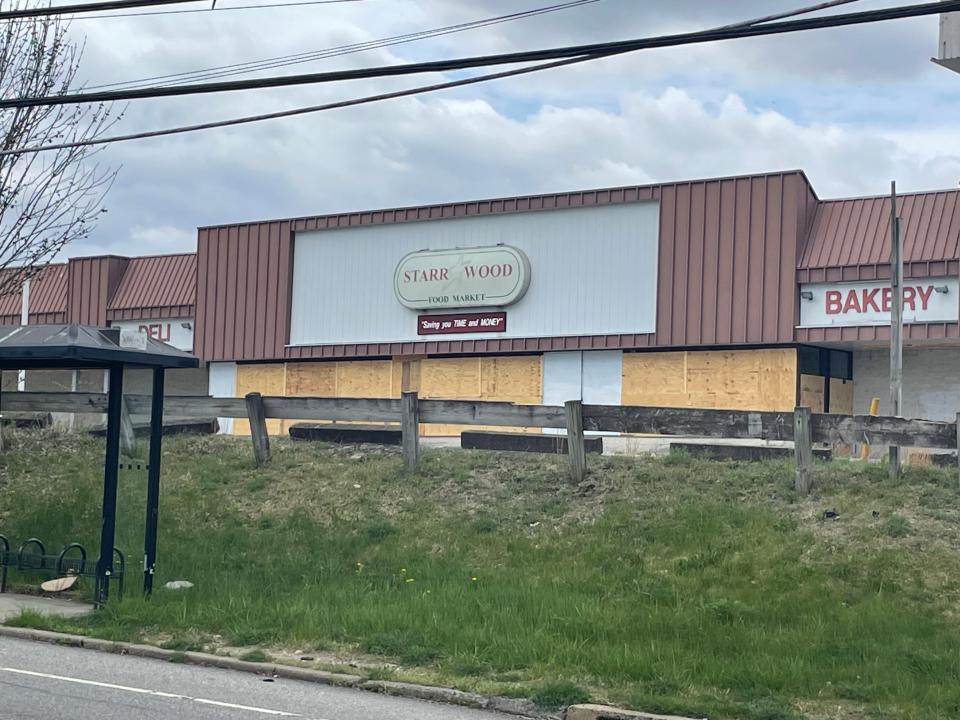There are four supermarkets in Norwich. Why does the government consider it a food desert?
With at least four grocery stores in the city, plus a number of convenience stories, it is difficult to consider that Norwich may be a food desert. Yet there are neighborhoods within the city where there is limited or no local access to nutritious fresh food.
Food deserts are defined by two key components: low income and low access, according to the U.S. Department of Agriculture. There are four different census tracts in Norwich considered to be food deserts: Greeneville, Taftville, Thamesville, and the East Side and Laurel Hill tract, based on the 2019 data, the most recent year of available data.
According to Uncas Health District Director of Health Patrick McCormack, reasons for food deserts include lack of stores, transportation issues, limited resources, and affordability.

These barriers factor into the overall health of the community, State Rep. Derell Wilson said.
"As the community is growing with individuals that are living, working and playing in an area, it's important they have the necessities they need, not only to be successful, but physically and mentally healthy as well," he said.
Grocery store closures in Norwich
In McCormack’s 14 years at Uncas Health District, he’s seen multiple groceries close around Greenville and Taftville. Chinatown Food Center on 475 Hamilton Avenue closed in 2010. A fire broke out at the market on the corner of Providence Street and Second Avenue in 2017. Starrwood Market closed in 2018, he said.
“That section of town has lost a number of food establishments,” McCormack said. “The bodegas and variety stores that might be in a gas station don’t fill the need for those communities.”
New housing, from townhouses to the Lofts at Ponemah Mills, is increasing the Greeneville and Taftville population. This necessitates the need for greater access to fresh food, Wilson said.

Food deserts are not just an urban issue
While food deserts are commonly framed as an urban issue, it also impacts suburban and rural communities. For example, Sprague and Bozrah don’t have their own grocery stores, and Griswold residents will go to the Lisbon Landing area for their grocery shopping. This requires either personal or public transportation, which can be a barrier, McCormack said.
“It’s a regional issue, so it should be looked at as a regional issue, not just a city issue,” he said.
At the regional level, the Southeastern Connecticut Council of Governments and other entities can be used to tackle the problem, McCormack said.
Solving the problem involves looking at data without making assumptions, then working with community-minded business owners, and support them from the city and the regional level, McCormack said.
The larger supermarkets in the area already do good community work, and McCormack doesn’t want to belittle their impact. Solving the food desert problem is a partnership as a whole, he said.
Why grocery stores?
People need to buy groceries so they can make multiple healthy meals, and not just keep getting premade-meals. Mobile food pantries and soup kitchens in the area provide food to residents, but the people are at the mercy of how many items and volunteers are able to get out there, McCormack said.
Long-term benefits from improved food access include better health, lower healthcare costs, saving money. The food desert issue dovetails into other issues, from education about food, to making sure people are earning a living wage and live in adequate housing, McCormack said.
“A person shouldn’t be less healthy than another person because of their social status, but the reality is if you live in a small apartment with limited resources… you’re already at risk of having poor health outcomes,” he said.
Spending time and money
The convenience stores in Greeneville and Taftville tend to be smaller, have fewer offerings, and are more costly than grocery stores, McCormack said.
In just one example, a bottle of Wishbone Salad Dressing costs $1.99 for 8 ounces at Stop and Shop and Shop Rite, but Sunshine Market in Greeneville charges $2.79.
While some people can get to the other side of town to grocery shop with no problem, others can’t. Some people are dependent on bus schedules, and others don’t have the time in their day to make the trip, McCormack said.
The cost of a food desert
For comparison's sake, The Bulletin compared stock and prices on some standard groceries at five area stores. Here's what we found:
Stop and Shop Norwichtown | Shop Rite West Side | Sunshine Market Greenville | Family Dollar Taftville | Norwich Mini Mart Downtown | |
Eggs - 1 dozen | $3.79 | $6.49 (18 ) | $5.99 | $3 | $3.50 |
Milk - 1 gallon | $4.29 | $3.99 | $3.99 | $3.65 | $5.50 |
Bread - 1 loaf, white | $1.79 | $1.49 | $3.09 | $2.95 | n/a |
Peanut Butter - 16 ounce jar | $2.39 | $2.69 | $4.19 | $2.55 | $4.50 |
Jelly - 18 ounce jar | $2.49 | $2.69 | $4.99 | $3.10 (30 ounce jar) | $4.50 (20 ounce jar) |
Pasta Sauce - 24 ounce jar | $1.79 | $2.29 | $2.79 | $2.55 | $3 |
Pasta - 1 pound spaghetti | $1.25 | $0.99 | $1.99 (12 ounces) | $1 | $3 (lasagna) |
Frozen Vegetables -1 pound | $1.79 | $0.99 (12 ounces) | $1.69 (canned) | $1.50 (10 ounces) | $2.00 (canned) |
Tomatoes - price per pound | $3.89 | $2.99 | $1.99 | n/a | n/a |
Cucumbers - each | $0.99 | $0.89 | $1.59 | n/a | n/a |
Salad Dressing - 8 ounces | $1.99 | $1.99 | $2.79 | $1.95 (16 ounces) | n/a |
Total | $26.45 | $27.49 | $35.09 | $22.25 | $26.00 |
Food distributions and farmers' markets
Greenville Neighborhood Committee and the Greenville Neighborhood Revitalization Zone are working with Evans Memorial AME ZION Church to bring a fresh produce distribution site to the Greeneville Playground soon, Neighborhood Committee. As of April 19, the groups still sought volunteers for the effort, and interested individuals can send a message on Facebook to learn more, Vice President Cynthia Jean-Mary said.
The food will be from The United Way of Southeastern Connecticut's United Way/Labor Food Center, and possibly other sources, Jean-Mary said.
The Greenville Neighborhood Committee has also considered a community garden and planting herbs in flowerpots to help fill the need, Jean-Mary said.
"We're showing our community other alternatives on how to stay healthy before the grocery store gets here," she said.
A farmers' market could also work, if space is available and the market can focus on food. Food education also needs to come with that farmers' market, and the Uncas Health District is willing to help, McCormack said.
“(Greeneville) is the type of location that can benefit from a farmers' market,” he said.
The farmers' market at Howard Brown Park has been successful, but placing a market in Greeneville can give more people an opportunity for access. As the market grows, it can find a permanent indoor location, so it could have reliable hours, McCormack said.
Support from staff nutritionists from local organizations helps with educating people on eating healthier, McCormack said.
“It’s a matter of highlighting the people in the community doing that work,” he said.
There can be partnerships with existing businesses, marketing them through the towns and schools, incentivizing transportation from where food is- perhaps even door delivery, to increase their sales- McCormack
Cultural appropriateness
Cultural appropriateness of food also plays into the food desert equation, from types of seasoning, to certain foods being more desirable than others. That’s why a farmers' market effort should include talking with the community, and avoid making assumptions, McCormack said.
Some of the smaller markets in Norwich are cultural, from Sunshine Farms, which sells middle eastern foods to Raviraj Market selling Indian foods. Another cultural food seller is S&A Market in downtown, selling Asian foods. However, S&A also has fresh foods, including produce and meat.
“They are providing a service to the community by having those items available, and they are filling a gap, but they can only do so much,” McCormack said.
This article originally appeared on The Bulletin: Norwich CT is a food desert: here's which neighborhoods are affected

